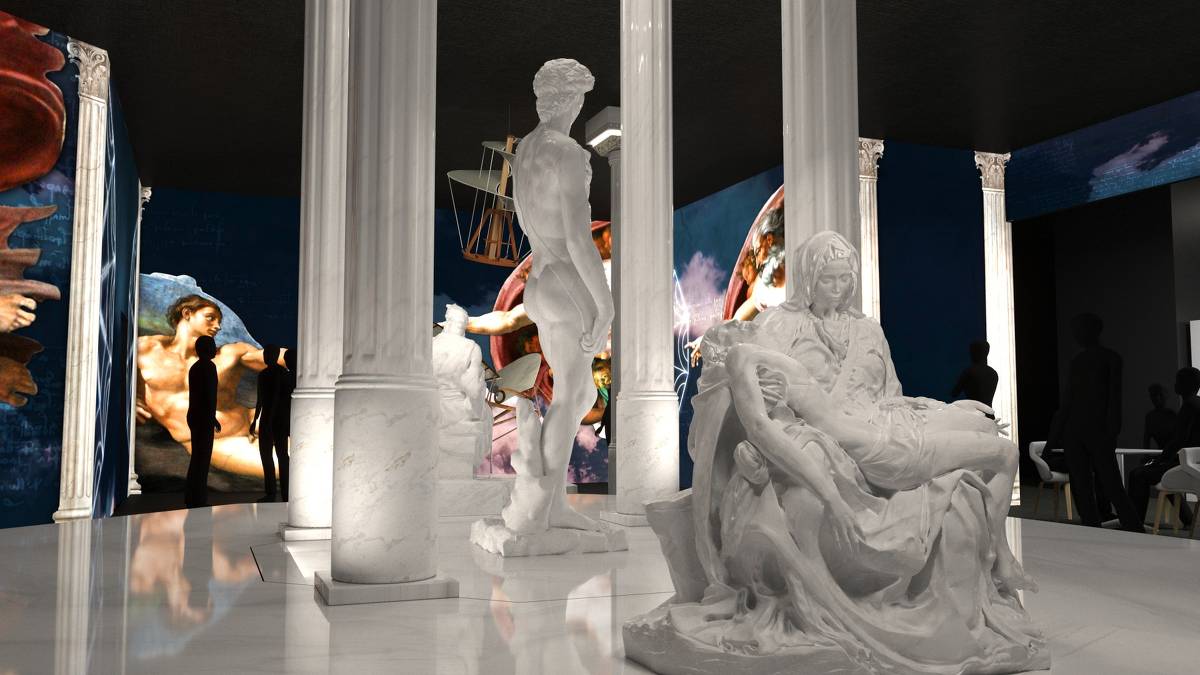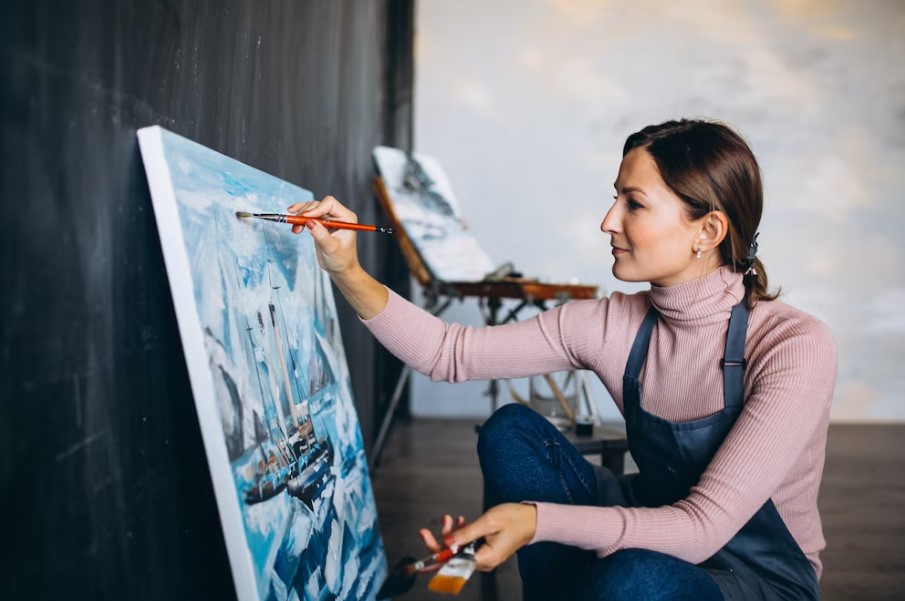Miniature treasures represent some of humanity’s most intricate artistic achievements, yet these delicate objects face constant threats from time, environment, and neglect. Preserving them requires specialized knowledge and unwavering dedication.
🎨 The Enchanting World of Miniatures and Why They Matter
Throughout history, artists and craftspeople have been captivated by the challenge of creating beauty on a diminutive scale. From ancient Egyptian amulets to Victorian dollhouse furniture, miniatures have served as tokens of wealth, tools for education, expressions of devotion, and demonstrations of extraordinary skill. These tiny treasures offer us windows into past cultures, technologies, and aesthetic sensibilities that larger artifacts sometimes cannot provide.
The significance of miniature objects extends far beyond their physical size. They often contain details that reveal manufacturing techniques, social customs, and artistic trends of their era. A seventeenth-century portrait miniature might show clothing details invisible in larger paintings. A Japanese netsuke can demonstrate carving methods passed down through generations. Each miniature object carries within it a story waiting to be discovered and shared.
Museums, collectors, and cultural institutions worldwide recognize that these small-scale marvels deserve the same level of care and protection as monumental works. However, their very smallness presents unique conservation challenges that require specialized approaches, tools, and expertise.
🔬 Understanding the Threats: What Endangers Miniature Objects
Miniature treasures face a complex array of threats that can compromise their integrity and longevity. Environmental factors represent the first category of concerns. Temperature fluctuations cause materials to expand and contract, which can be particularly damaging to composite objects made from multiple materials with different thermal properties. A miniature box with metal hinges and a wooden body might literally tear itself apart over repeated temperature cycles.
Humidity presents equally serious challenges. Too much moisture encourages mold growth, causes metals to corrode, and makes organic materials swell. Too little humidity makes materials brittle, leading to cracking and crumbling. For miniatures made from ivory, bone, or wood, these dimensional changes can be catastrophic given their delicate scale.
Light exposure, particularly ultraviolet radiation, gradually breaks down chemical bonds in pigments, textiles, papers, and other materials. What might take decades to become visible damage in a full-size painting can happen much faster in a miniature where paint layers are thinner and more vulnerable. The fading of a watercolor miniature portrait can erase facial features that were barely millimeters in size to begin with.
Physical handling poses risks that increase inversely with size. The smaller an object, the easier it is to drop, misplace, or damage through well-intentioned but improper handling. Oils and acids from human skin can leave permanent marks on delicate surfaces. Even the pressure from fingertips can crush fragile elements or dislodge components.
Biological and Chemical Degradation
Insects find miniatures particularly attractive because small spaces offer protected environments for nesting. Carpet beetles, silverfish, and clothes moths can devastate textile miniatures, consuming fibers and leaving behind only fragments. Wood-boring beetles don’t discriminate based on object size—a precious miniature chair is just as vulnerable as full-size furniture.
Chemical degradation occurs when materials inherently contain the seeds of their own destruction. Cellulose nitrate, used in early plastics and photographic films, breaks down over time, releasing nitric acid that accelerates further decomposition. Metal objects can suffer from bronze disease, a cyclical corrosion process that continues even in controlled environments unless actively treated.
💡 Professional Conservation Approaches for Miniature Collections
Conserving miniatures requires adapting standard conservation principles to unprecedented scales. Professional conservators working with miniature objects employ specialized tools, including microscopes for examination and treatment, micro-spatulas for cleaning, and precision applicators for consolidants and adhesives.
The first step in any conservation program involves thorough documentation. High-resolution photography captures the object’s current condition, providing a baseline for future reference. Conservators photograph miniatures from multiple angles, often using specialized lighting techniques like raking light or ultraviolet illumination to reveal surface texture, previous repairs, and hidden damage.
Condition assessment follows documentation. Conservators examine every aspect of the object, noting areas of loss, cracks, corrosion, stains, structural weaknesses, and previous interventions. For composite miniatures containing multiple materials, each component receives individual assessment since different materials require different treatment approaches.
Treatment Strategies That Respect Scale and Integrity
Conservation treatments for miniatures prioritize minimal intervention. Conservators follow the principle that less is often more, avoiding aggressive cleaning or reconstruction that might remove original material or obscure historical evidence. Treatments must also be reversible whenever possible, allowing future conservators to undo interventions if better methods become available.
Cleaning miniatures demands exceptional care and patience. Conservators might spend hours using dry methods first—soft brushes, specialized sponges, or gentle air flow—to remove surface dirt without introducing moisture. When aqueous cleaning becomes necessary, conservators apply tiny amounts of solutions with cotton swabs or brushes, working under magnification to control exactly where liquids go.
Structural repairs require enormous precision. Joining broken ceramic or glass miniatures might involve adhesives applied with needles under microscopic observation. Reinforcing fragile textiles could mean stitching with thread so fine it’s nearly invisible, or applying Japanese tissue paper in patches measured in millimeters.
🏛️ Creating Optimal Storage Environments
Proper storage represents the foundation of preventive conservation. Miniature collections require storage solutions that balance accessibility with protection. Custom-fitted boxes made from archival-quality materials provide individual housing that prevents movement and cushions against shock. The boxes themselves often contain cutouts precisely shaped to each object, holding it securely without applying pressure to vulnerable areas.
Climate control within storage areas maintains stable temperature and relative humidity. Most miniature collections thrive in environments maintained at approximately 65-70°F (18-21°C) with relative humidity between 45-55%. These conditions slow chemical reactions that cause deterioration while preventing mold growth and keeping materials dimensionally stable.
Light levels in storage should remain minimal. Many institutions keep miniature storage areas dark except when objects are being retrieved or returned, using motion-activated lighting that automatically shuts off to limit cumulative light exposure. When illumination is necessary, LED lights that emit no ultraviolet radiation offer the safest option.
Display Considerations for Public Collections
Displaying miniatures presents unique challenges since their small size naturally invites close viewing, yet proximity increases security risks and potential for accidental damage. Museums address this through thoughtfully designed cases with excellent lighting that allows visitors to appreciate details from a safe distance. Fiber optic or LED lighting positioned to minimize heat and UV exposure illuminates objects without endangering them.
Security measures for displayed miniatures often include alarmed cases, video surveillance, and vigilant gallery attendants. The small size that makes miniatures so appealing also makes them vulnerable to theft—an entire collection could theoretically fit in someone’s pocket. Institutions balance public access with security through careful planning and appropriate technology.
📚 Digital Preservation: Creating Virtual Immortality
Technology offers powerful new tools for safeguarding miniatures beyond physical conservation. High-resolution digital photography creates detailed records that capture objects as they exist today. These images serve multiple purposes: documentation for conservation records, resources for researchers unable to access physical objects, and educational materials for public programs.
Three-dimensional scanning takes digital preservation further by creating virtual models that capture not just appearance but spatial information. Photogrammetry and structured light scanning can produce 3D models accurate to fractions of a millimeter. These digital twins enable researchers to study objects without handling originals, allow virtual reconstructions of damaged pieces, and could even facilitate physical reproductions if originals are lost.
Digital archives democratize access to miniature collections. A student in one continent can examine details of a miniature housed on another continent, zooming in to see brushstrokes or surface textures invisible to the naked eye. Online databases with searchable metadata connect related objects across collections, revealing patterns and relationships that isolated study might miss.
Emerging Technologies in Miniature Conservation
Advanced imaging techniques continue to evolve, offering conservators unprecedented diagnostic capabilities. X-ray fluorescence spectroscopy identifies elemental composition without taking samples, revealing what pigments an artist used or what alloy forms a metal miniature. Infrared reflectography penetrates surface layers to show underdrawings or previous designs that artists painted over.
Three-dimensional printing creates possibilities for creating exact-fit support structures for damaged miniatures or producing study replicas that can be handled freely while originals remain protected. Some conservators experiment with printing missing elements to restore structural stability without attempting to fake original components—the printed parts are clearly contemporary interventions, not forgeries.
🌍 Community Engagement and Educational Initiatives
Preserving miniatures for future generations requires building public understanding and appreciation. Educational programs that reveal the artistry, history, and conservation challenges of miniature objects help create constituencies who value preservation efforts. When people understand what goes into creating and maintaining these tiny treasures, they become advocates for funding and protecting collections.
Hands-on workshops offer particularly effective engagement. Participants who try painting a portrait at miniature scale or carving a small object gain visceral appreciation for the skill involved. Conservation demonstrations showing the painstaking work of repairing a broken miniature or cleaning tarnished silver help audiences understand why preservation requires professional expertise and adequate resources.
Social media platforms provide venues for sharing miniature treasures with global audiences. Museums post high-resolution images, behind-the-scenes conservation videos, and storytelling content that brings miniatures to life. These digital outreach efforts build communities of enthusiasts who might never visit physical institutions but become invested in preservation through online engagement.
🔐 Private Collectors as Preservation Partners
Private collectors hold significant miniature collections that complement institutional holdings. Many important miniatures remain in private hands, making collectors essential partners in preservation efforts. Responsible collectors recognize their role as temporary custodians rather than permanent owners—objects will outlive them and pass to future caretakers.
Organizations like professional appraisers’ associations and specialty collecting societies promote best practices among private collectors. They offer guidance on proper storage, handling, and display, connecting collectors with conservators who can treat damaged objects. These networks facilitate knowledge sharing that elevates preservation standards across private collections.
Documentation proves crucial for private collections. Collectors should photograph their miniatures, record provenance information, and maintain condition reports. This documentation protects investment value, certainly, but more importantly, it preserves historical information that gives objects cultural significance beyond monetary worth.
Planning for Collection Futures
Thoughtful collectors plan for what happens to their miniatures after their lifetimes. Options include bequeathing collections to museums, establishing private foundations to maintain collections, or arranging sales with provisions that keep collections intact. Advanced planning ensures miniatures find appropriate homes where preservation continues and access remains possible.
🎯 Training the Next Generation of Miniature Conservators
Specialized knowledge required for miniature conservation doesn’t develop overnight. Conservation training programs increasingly offer courses focusing on small-scale objects, recognizing that techniques applicable to full-size artifacts often need adaptation for miniatures. Students learn to work under magnification, develop fine motor control for delicate manipulations, and understand how material behavior changes at small scales.
Mentorship relationships between experienced miniature conservators and emerging professionals transfer tacit knowledge that textbooks cannot convey. Learning when to intervene and when to stop, developing judgment about treatment priorities, and gaining confidence with precious objects requires supervised practice and constructive feedback from seasoned practitioners.
International collaboration strengthens the miniature conservation field. Conservators share treatment protocols, discuss challenging cases, and collaborate on research projects that advance collective understanding. Professional conferences dedicated to miniatures provide forums for presenting new findings and debating best practices.
💫 Sustaining Preservation Efforts Across Time
Long-term preservation requires sustained commitment and adequate resources. Institutions housing miniature collections need ongoing funding for climate control, security systems, conservation supplies, and professional staff. Budget constraints often force difficult choices about which objects receive treatment first, making advocacy for preservation funding critically important.
Grants from government agencies, private foundations, and individual donors support conservation projects that institutions cannot fund from operating budgets. Successful grant applications articulate why particular miniatures deserve preservation investment, connecting objects to larger historical narratives and demonstrating public benefit from conservation work.
Endowments dedicated to collection care provide sustainable funding streams that survive changing institutional priorities and economic fluctuations. Forward-thinking donors recognize that preservation never ends—collections require perpetual care, making endowed funds especially valuable for long-term sustainability.
✨ The Collective Responsibility of Cultural Heritage
Ultimately, preserving miniature marvels represents a collective responsibility spanning institutions, professionals, collectors, and appreciative publics. These tiny treasures embody human creativity, skill, and cultural expression across centuries and civilizations. They connect us to ancestors who poured talent and care into creating beautiful things at impossibly small scales.
Future generations deserve opportunities to experience these miniature marvels directly, not just through photographs or descriptions. Physical objects carry presence and authenticity that reproductions cannot replicate. The slight imperfections in a hand-painted miniature portrait, the tool marks on a carved boxwood scene, the patina on ancient metal work—these authentic characteristics connect viewers across time to the artists who created them.
By applying conservation science, employing appropriate technologies, fostering education, and maintaining vigilant care, we ensure miniature treasures survive for centuries ahead. Each generation that successfully passes these objects forward honors the artists who created them and enriches the world available to those who come after. This chain of custodianship represents one of humanity’s noblest endeavors—preserving the irreplaceable for the unborn who will treasure it as we do.
Toni Santos is a visual chronicler and historical researcher who explores the lost language of healing through forgotten instruments and ancient medical design. With a delicate blend of curiosity and reverence, Toni uncovers the mysterious tools once used in temples, apothecaries, and folk practices—objects that echo a time when healing was both art and ritual.
Rooted in a fascination with the intersection of medicine, myth, and craftsmanship, his work traces how past civilizations understood the body, spirit, and cosmos through tools now obscured by time. From vibrational tuning forks and herbal infusion vessels to symbolic scalpels carved with protective motifs, Toni’s visual storytelling gives new life to the technologies that once held deep cultural and curative power.
With a background in historical illustration and material culture, Toni reconstructs these instruments with artistic precision—offering not just images, but narratives that reveal the beliefs, fears, and hopes embedded in the tools of care.
As the visionary behind Vizovex, Toni shares curated archives, interpretive essays, and artifact-inspired artworks that help audiences reconnect with the ancestral roots of healing and the poetic devices once used to restore balance.
His work is a tribute to:
The craftsmanship of early healing technologies
The spiritual symbolism behind medical instruments
The intimate connection between body, tool, and ritual
Whether you’re an enthusiast of forgotten sciences, a student of holistic traditions, or a seeker of the obscure, Toni welcomes you into a world where healing was sacred, and every tool told a story—one wound, one charm, one cure at a time.





